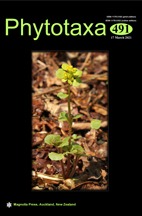Abstract
A new species, Sarcopodium tibetense, is described on rotten stem base of maize straw from the Tibet Autonomous Region. The anatomy of perithecia, which covered with septate, curved hairs on the surface, striate ascospores, and penicillate conidiophores indicate that the fungus belongs to Sarcopodium. It is characterized by solitary to gregarious perithecia that are globose to subglobose or pyriform, not becoming cupulate upon drying, and with hyaline hairs on surface; cylindrical to clavate asci with eight ascospores that are fusiform to ellipsoidal and striate. The asexual state is penicillium-like and with subglobose, ellipsoidal, oblong to rod-shaped, aseptate, smooth, hyaline conidia aggregated in a slimy mass. Sarcopodium tibetense is distinguished from its morphologically similar species, S. circinosetiferum, by narrower conidiophores and the presence of 50 bp and 9 bp sequence divergences in the ITS and LSU regions. Sequence analysis of the combined act, ITS, LSU and tub genes confirm its taxonomic position in Sarcopodium as a species new to science.

